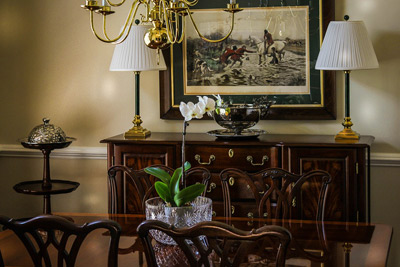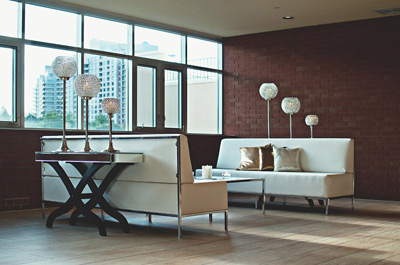Whether you’re looking for your next buy-to-let investment or even your first one, it’s likely that you’ve got lots of ideas about what type of property you should buy. Selecting whether to invest in an old or a new property can be difficult. Both have their distinct advantages, so there’s no ‘right or wrong’ answer to this. To help you decide, we’ve provided an overview highlighting the pros and cons of each.
Buying Old

Some tenants simply don’t like new homes, many feeling that they lack character and personality unlike older properties which have period features such as sash windows, high ceilings, opens fires and wooden beams.
A major advantage of buying an established property is that you can renovate and add value to the property which can boost your equity. In addition, historical data will be available, giving you an idea of how the property value has changed over time which can help you make an informed decision.
When you buy an older property, you have the ability to negotiate for a fair price. Vendors of established properties often have a motivation to sell relatively quickly so you can use this to your advantage to negotiate a bargain. Generally, a well-bought established property will outperform the averages over the long term and experience high capital appreciation which will benefit your cash flow in the future.
If you’re buying an established or period property, then ensure you check it thoroughly and get it surveyed by experts. The older the property is, the more likely you are to find problems with internal aspects such as wiring, and external aspects like the pointing or roof condition. Additionally, remember to look at the basics such as the age of the boiler. If a boiler appears to be getting towards the end of its life then replacing it could be a costly exercise.
An older property may require upgrades and repairs due to wear and tear over time. Not only could this eat into your profit if a major renovation needs to take place, this could also mean that you risk loss of rental income if tenants need to temporarily vacate. Although you should avoid anything that needs costly structural repair, something that’s a bit tired and could do with updating provides the perfect opportunity to create immediate capital growth.
Finally, the older a home is, the less energy efficient the property it’s likely to be. This can be a turn-off for some tenants especially when they see the energy performance certificate. If you do buy a property that doesn’t meet energy efficiency standards then you may have to pay a significant sum for upgrades to this.
Buying New

Not everybody finds old properties charming and as a rule of thumb the older the home, the more maintenance it will require. This means that new build homes are less likely to suffer from problems by virtue of the fact that everything is so new. Also, new homes give the landlord a certain level of reassurance as they usually come with a 10-year warranty which covers a wide range of defects. However, there is little opportunity to add value to the property once you’ve purchased it.
When you buy a new home, everything is already done for you; new floor and window coverings, modern kitchens and bathrooms and a fresh coat of paint. All that’s left to do is find tenants to move in. But the downside with new build homes can be teething problems. These are often basic issues but they can be tiresome if you have a new tenant, as it can lessen the likelihood of them staying for the long-term.
Typically new dwellings are perceived to be higher quality which means you may have greater tenant appeal. This is because tenants will be attracted to modern appliances and technologies. Newly built apartment blocks will more often than not feature a lift, widening their appeal to young families and people with limited mobility. They also tend to be situated close to local amenities, with good transport links which instantly tick the boxes for a wide range of potential tenants.
If you’re buying an off-plan purchase and you meet the developer, you may be able to negotiate on the price. Securing the property at a cheaper price could mean a larger return further down the line. Also, there’s often the option to select your preferred fixtures and fittings so you can customise the property to what you best feel would appeal to your prospective tenants.
One other point to remember, with buying off-plan, you can’t move tenants in right away, as building work needs to be carried out and completed. This means that, if you’re investing in off-plan property, you have to be willing to wait before bringing in initial returns on your investment.
New apartments and houses are often the first to see prices soften when the overall market loses momentum; meanwhile, established homes will either maintain their value or experience a very minimal adjustment.
Final Thought…
Most importantly, check what lets well in the area that you’re looking to buy, and constantly keep in mind the amount you’re thinking of charging. This way, you can work out your rental yield and ensure you’re maximising your investment potential.
As a landlord, always remember that the more someone feels at home in your property, the more likely they are to stay for the long term. If you can keep your tenant for a number of years then you’ll reduce the risk of void periods, in turn boosting your return on investment… whether you choose to buy old or new!




